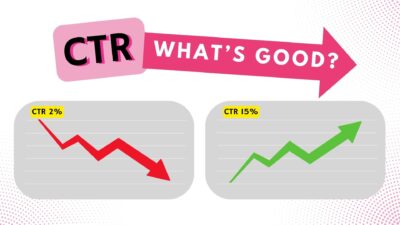
One key metric that helps creators gauge their effectiveness is the Click-Through Rate (CTR). In this blog post, we will explore what CTR is, how it is calculated, why it matters, the factors affecting it, what constitutes a good CTR, and strategies for improving it.
What is CTR?
CTR, or Click-Through Rate, is a metric used to measure the number of clicks on a specific link or video relative to the number of times that link or video was shown to users. It serves as an indicator of how appealing a video’s thumbnail and title are to potential viewers. Essentially, a higher CTR suggests that your video is capturing interest effectively, while a lower CTR may indicate that improvements are needed.
Why CTR Matters
Understanding CTR is essential for content creators, marketers, and businesses looking to optimize their online presence. A high CTR signifies that your content resonates with your audience, leading to increased traffic and potential conversions.
How is CTR Calculated?
Calculating CTR is straightforward. The formula is as follows:
CTR (%) = (Clicks / Impressions) x 100
Clicks refer to the number of times users clicked on your video.
Impressions denote the number of times your video was displayed to users.
For instance, if your video received 100 clicks and had 5,000 impressions, your CTR would be:
CTR = (100 / 5000) x 100 = 2%
This simple calculation provides valuable insight into your video’s performance and viewer engagement.
Why is CTR Important?
CTR plays a vital role in various aspects of content creation and marketing:
Reflects Thumbnail and Title Quality
A higher CTR indicates that your thumbnail and title are compelling enough to encourage viewers to click. If your CTR is low, it may signal that you need to re-evaluate these elements to make them more engaging.
Influences Video Performance
Platforms like YouTube utilize CTR as a factor in determining how videos are ranked and recommended. A video with a higher CTR is more likely to be promoted by the platform, leading to increased visibility and viewership.
Facilitates Timely Strategy Adjustments
Monitoring CTR allows creators to quickly adjust their strategies. If a particular video is underperforming, analyzing its CTR can help identify whether the issue lies with the thumbnail, title, or content itself, enabling timely improvements.
Factors Affecting CTR
Several elements can influence CTR, including:
Thumbnail
The thumbnail is often the first impression a viewer has of your video. An eye-catching, relevant thumbnail can significantly boost your CTR.
Title
A compelling title that accurately reflects the content while piquing curiosity can encourage clicks. Avoid clickbait tactics, as they can lead to high bounce rates and negatively impact your overall metrics.
Viewer Preferences
Understanding your audience’s interests and preferences is crucial. Tailoring your content to align with what your viewers seek can enhance CTR.
Video Topic
The relevance of the video topic to current trends or audience interests can also affect CTR. Engaging with trending topics can attract more clicks.
What CTR is Considered Good?
While CTR can vary by platform and industry, a general benchmark for a good CTR is between 2% and 10%. Below 2% may indicate that there are issues with your video’s appeal, while above 10% is considered excellent. However, it’s essential to compare your CTR against similar content in your niche for a more accurate assessment.
How to Improve CTR
Improving your CTR involves several strategies:
Enhance Thumbnail and Title
Thumbnail: Invest time in creating visually appealing thumbnails that stand out. Use bold colors, clear images, and text that conveys the essence of your video.
Title: Craft titles that are informative yet intriguing. Incorporate keywords relevant to your content to improve searchability.
Focus on Video Content in the First Few Seconds
The initial moments of your video are crucial. Hook your audience with engaging content right from the start to encourage them to continue watching. This can lead to higher retention rates, which in turn can positively affect your CTR over time.
Conduct A/B Testing
Experiment with different thumbnails and titles to see which combinations yield the highest CTR. A/B testing allows you to gather data and make informed decisions based on viewer preferences.
Analyze Competitors
Look at similar content in your niche and analyze their CTR. Understanding what works for others can provide insights into improving your strategies.
Utilize Social Media
Promote your videos on social media platforms to increase visibility. Engaging with your audience on these platforms can drive traffic to your videos and improve CTR.
Monitor Analytics
Regularly check your analytics to track CTR and other performance metrics. This will help you identify trends and make necessary adjustments to your content strategy.
CTR is a vital metric that can significantly impact the success of your video content. By understanding what CTR is, how to calculate it, and the factors that influence it, you can make informed decisions to enhance your video’s appeal. Remember, a good CTR is typically between 2% and 10%, but continuous improvement through strategic adjustments can lead to even better results. By focusing on your thumbnail, title, and engaging content, you can effectively increase your CTR and overall video performance.


